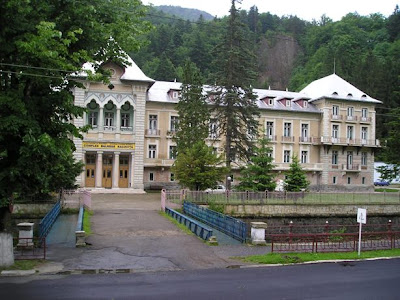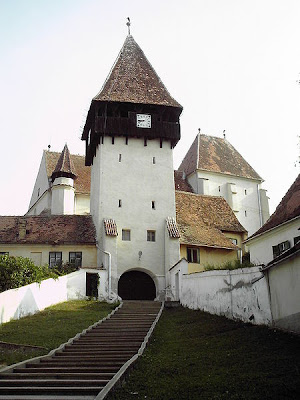
Slănic Prahova is an all season resort of national importance, with the sedative-indifferent climate of forested hills, characterized by pleasant summers (July average temperature 19.5°C) and relatively mild winters (January average 3.5°C below). The average annual temperature is of 9°C and the precipitation averages 750 mm annually.

The town is famous for its springs of chlorided, sodic, sulphated, calcic mineral waters (used since 1885, when the resort began developing), and salt lakes (Romanian: lacuri sau băi): Baia Baciului (Shepherd’s Lake), Baia Verde (Green Lake), Baia Roşie (Red Lake), Lacul Miresei (The Bride’s Lake), Baia Porcilor (Pigs' Lake), who have a high level of salinity (80 ÷275 g / l). Bathing in the lakes is recommended for the treatment of degenerative and articular rheumatic diseases, post-traumatic conditions, peripheral neurological (light paresis, condition after poly-neuritis, old poliomyelitis sequels), gynecological disorders, respiratory disorders, dermatological diseases (psoriasis), vascular diseases and more. Other tourist objectives are the Salt Mountain (uncovered, unique in the world) and the Bride’s Cave, now partially collapsed due to rain erosion.


Among the natural treatment factors, we have to mention here The Old Salt Mine (Salina Unirea). The mine was opened in February 1938, but actual works started in 1943 and continued in 1970. Mining in a descending direction, both horizontal and vertical cutting out with specific cutting equipment, the rocks were dislocated by explosions and then transported by mining car to the shaft and up to the preparation and shipping line.

The mine consists of 14 trapezoid-shaped rooms with a ten-meter ceiling and thirty and thirty-two-meter floor width. The height of the rooms is of fifty-four meters and the wall inclination angle is of 60. The level difference between the surface and the mine hearth is of 208 m. 2,6 million cubic meters of rock salt were excavated during the working of the mine. After 1970 the mine became a tourist attraction. It was adequately modified to accommodate both visitors and patients treated for various respiratory diseases in the fully equipped sanatorium housed inside the mine. Qualified medical personnel attended and assisted asthma patients treated in the salt mine sanatorium.



Other rooms house football and handball grounds, a running track and even museum. The works of the sculptor Iustin Năstase, among which the busts of the Roman emperor Traian and the Dacian king Decebal and several other pieces presenting relevant elements of the existence of the Dacian and Roman peoples are exhibited in the "Genesis" room.




















